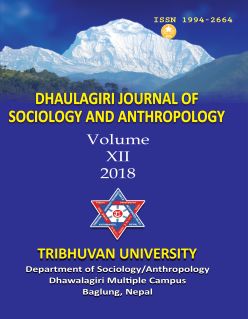A Review of Simarongarh’s History on Its Nexus Areas with References of Archaeological Evidences
DOI:
https://doi.org/10.3126/dsaj.v12i0.22176Keywords:
Videha, Tirhat, Mithila, labyrinth fort, Paleolithic, Neolithic, Mesolithic, terracottaAbstract
After the Lichachhavi period, Nepal was bounded within the Kathmandu valley only. Sinja emerged as a powerful state in the west of Nepal. Likewise, Karnata dynasty became strong and powerful to the south of Nepal in the beginning of 10th and 11th century A. D. They were so strong and powerful that they attacked Kathmandu valley several times and plundered for the sake of wealth. So Simraongarh was once an important medieval kingdom of Nepal. It was established by Karnata dynasty Nanyadev in 1097 A. D. After capturing Mithila, Nanyadev began to rule it from Simraongarh. He has been credited in the records for the unification of Tirhut. Under the Karnatas Tirhut had developed on economic, social and cultural which was also known as golden age. They ruled over Mithila for about 227 years and after that Gayasuddin Tuglak conquered. Muslims ruled about three hundred years, and then it came under Sens of Makawanpur. Lohang Sen had extended his territories up to Vijayapur. When Prithivi Narayan Shah conquered Makawanpur in 1762 A. D. all part of eastern Terai including Tirhut or Mithila became integral part of Nepal. After the Anglo Nepal war in 1814 - 16 A.D., Nepal lost some parts of eastern Terai, it came again under its jurisdiction in Sugauli Treaty of 1816 A.D. But now people seem to forget Simarongarh which was once so rich and highly developed. Therefore, the objective of this article is not only to remind of its glorious past history but also to prove how important this area through archaeological findings.




